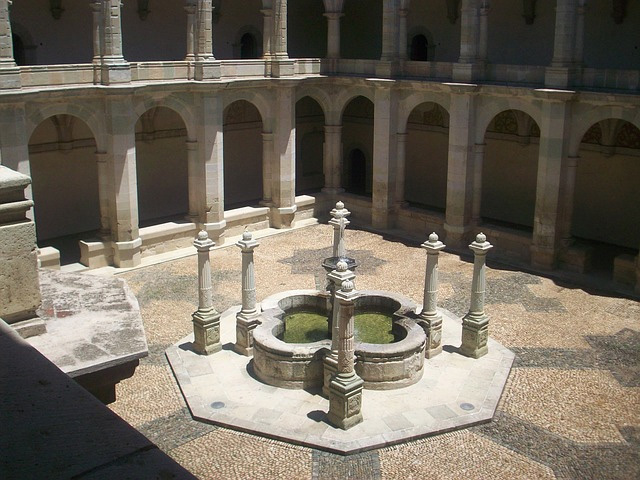The use of concrete structures to protect construction sites
To help develop this article, click 'Edit this article' above.
Contents |
[edit] Introduction
Once widely used in the Roman Empire, concrete has created some of the largest structures still standing today, such as the Pantheon and the Colosseum in Rome and more recently the Hoover Dam on the border between Arizona and Nevada in the USA.
Following the collapse of the Roman Empire, concrete was slowly phased out as a building material until its comeback in the middle of the 18th century. Nowadays it is a staple construction material and is one of the most widely used man-made materials throughout the modern world.
However concrete is not just useful as a building material for large scale projects. Concrete has a wide range of uses and because of its high density it can often be used as a security measure to deter trespassers, prevent people from breaking and entering and more. This makes it incredibly useful for building sites where the project has been briefly delayed for a few weeks or months and security measures need to be put in place to prevent intrusion, vandalism or theft.
We show three examples of concrete structures which can be used to great effect when renovating a building or conducting planned building or demolition works.
[edit] Concrete paving slabs
When working in damp or muddy conditions, thick sludge and mucky earth can hinder construction progress. Concrete paving slabs provide a stable and secure platform upon which construction workers can progress with construction. They are durable, hard wearing and resistant to the elements, making them ideal for long-term construction projects or projects working in the open air. Concrete paving slabs come in a variety of colours and sizes. In some cases it is a good idea to choose a brighter colour as it is easier to spot in harsh weather.
[edit] Concrete security planters
A great and subtle way to increase security is to decorate the exterior of the building with concrete security planters. A concrete basin is placed outside the building that is made of 2/3rds concrete, 1/3rd earth and soil. This can then be planted, giving the illusion that it is only there to provide foliage and a pleasant atmosphere. However the concrete acts as a fantastic security barrier as it prevents vehicles from parking and works as a physical barrier if intruders want to try to force their way in using heavy machinery.
[edit] Concrete barriers
Often the classical method of security is the most popular, and temporary concrete vertical barriers do an excellent job of keeping trespassers out. Their large bulk and variety of sizes prevents vehicles from entering a building site and because of their weight they can easily cordon off sections of the site to prevent access.
It is important to be aware that a construction site may be perfectly secure during the day; however safety and security measures must be put in place when the employees and construction workers sign off for the day, otherwise the building may be target for vandalism or theft. Concrete barriers and security planters deter this so that construction can go ahead as planned.
Featured articles and news
RTPI leader to become new CIOB Chief Executive Officer
Dr Victoria Hills MRTPI, FICE to take over after Caroline Gumble’s departure.
Social and affordable housing, a long term plan for delivery
The “Delivering a Decade of Renewal for Social and Affordable Housing” strategy sets out future path.
A change to adoptive architecture
Effects of global weather warming on architectural detailing, material choice and human interaction.
The proposed publicly owned and backed subsidiary of Homes England, to facilitate new homes.
How big is the problem and what can we do to mitigate the effects?
Overheating guidance and tools for building designers
A number of cool guides to help with the heat.
The UK's Modern Industrial Strategy: A 10 year plan
Previous consultation criticism, current key elements and general support with some persisting reservations.
Building Safety Regulator reforms
New roles, new staff and a new fast track service pave the way for a single construction regulator.
Architectural Technologist CPDs and Communications
CIAT CPD… and how you can do it!
Cooling centres and cool spaces
Managing extreme heat in cities by directing the public to places for heat stress relief and water sources.
Winter gardens: A brief history and warm variations
Extending the season with glass in different forms and terms.
Restoring Great Yarmouth's Winter Gardens
Transforming one of the least sustainable constructions imaginable.
Construction Skills Mission Board launch sector drive
Newly formed government and industry collaboration set strategy for recruiting an additional 100,000 construction workers a year.
New Architects Code comes into effect in September 2025
ARB Architects Code of Conduct and Practice available with ongoing consultation regarding guidance.
Welsh Skills Body (Medr) launches ambitious plan
The new skills body brings together funding and regulation of tertiary education and research for the devolved nation.
Paul Gandy FCIOB announced as next CIOB President
Former Tilbury Douglas CEO takes helm.
UK Infrastructure: A 10 Year Strategy. In brief with reactions
With the National Infrastructure and Service Transformation Authority (NISTA).
























